First of all, to begin with, a question, did you consider reading about reverse flow smokers? Have you been curious as to what all the fuss was about? The offset reverse flow smokers are frequently discussed as a better alternative to traditional offset smokers.
In addition, they are considered to be also a terrific instrument for making exceptionally excellent smoked meat. That has happened since they have equal temperature dissemination and complete smoke flow. But, instead of telling you what’s best, we’ll show you the meaning and role of an offset reverse flow smoker.
Table of Contents
Let’s be frank, What Is Meant By a Reverse Flow Smoker?
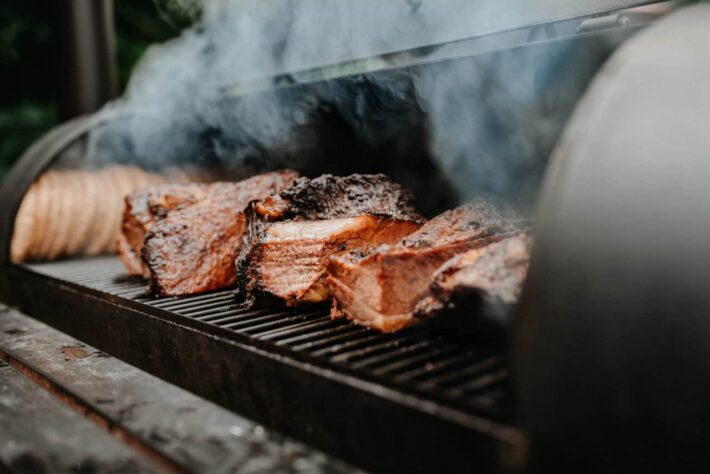
The typical offset smoker has been adapted into a reverse flow smoker. That works by driving smoke and the hot air under an extra piece of metal plate called a baffle. Then, it reverses the airflow to leave via a smokestack on the side of the firebox device, creating a more consistent cooking environment.
A reverse flow smoker enables heat to reach the cooking container from one end. The main difference is that heat is channeled beneath a metal plate before entering the cooking chamber. It then returns opposite or reverses direction through the cooking chambers, exiting via the firebox end.
To put it simply, a reverse offset smoker enables optimal or consistent heat dispersion inside the smoker. Are you a seasoned offset smoker? Not at all. Why? In an offset smoker, the area where the firebox is located gets extremely hot. If temperatures aren’t closely controlled, the meat in that region may burn or overcook. That’s where a reverse flow smoker forces the hot air to travel the whole cooking chamber. This method is used to distribute heat around the meat when it is being removed from the oven.
What Is the Best Way to Make Use of a Reverse Flow Offset Smoker?
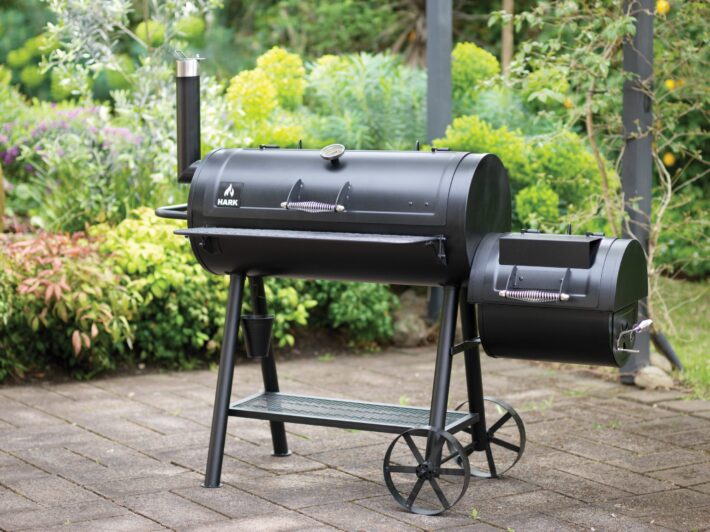
- Season the meat with your preferred dry rub ahead of time. Seasoned meat can even be kept overnight in the refrigerator.
- For a richer smokey taste, ply a chimney starter in order to ignite charcoal and set it inside the firebox with a few bits of hardwood.
- Modify the dampers until the temperature reaches approximately 225 F.
- Close the cover and place the meat over the heating racks.
- Every single hour, check the temperature and add additional wood and charcoal (that is, after beginning during the chimney starter) as needed to maintain a consistent temperature. You may need to modify the dampers before you start getting further.
- Continue to smoke the meat until it is tender. To determine when the cut has achieved its ideal temperature, make use of the internal meat probe or a smoke heat.
- Remove the pieces of meat from the pan and set them aside before serving for a period of 10 min.
Pros of an Offset Reverse Flow Smoking
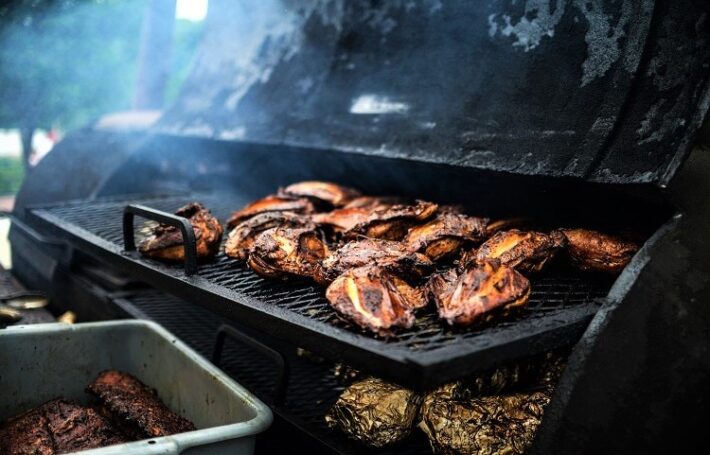
- Reverse flow smokers have the following advantages in addition to more excellent heat distribution:
- Prevents overcooking of some portions of your meat due to direct and robust heat
- Improving the passage of smoke in the cooking chamber of your device
- Allows for more consistent outcomes by allowing for an equally cooking temperature. That is why inexperienced smokers will find them more uncomplicated to use
- If you open the cooking chamber door, the temperature rapidly returns to normal.
- For better flavor, make sure the smoke is distributed evenly.
- The metal plate forms a greased pan. Fat spilling from the pan onto your meat adds flavor by accident.
- When more fuel is added to your smoker, the temperature spikes are reduced.
Frequently Asked Questions
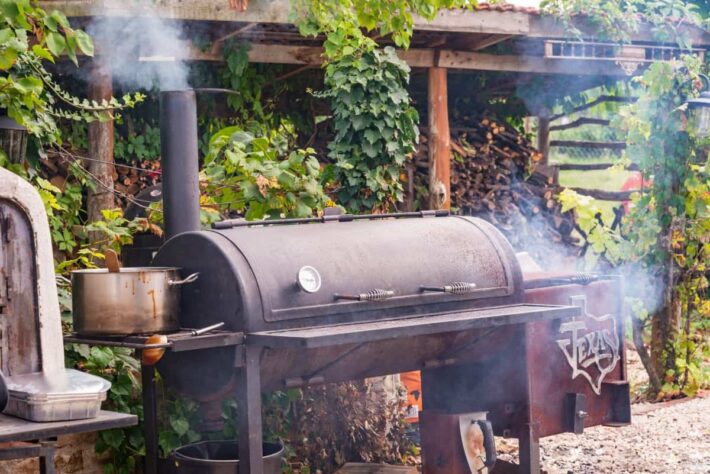
Q1. Is the heat in a reverse offset flow smoker consistent throughout?
It’s hard for the temperature to be entirely consistent throughout a smoker unless it includes a convection fan to circulate the air as in a typical oven manually. In a reverse flow smoker, the temperature should range between 25 and 50 degrees Fahrenheit.
Q2. What is the difference between the offset reverse flow smoker and an offset smoker?
They’re not the same. The design of the reverse flow evenly distributes smoke and heat for a more consistent cooking environment. More reliable results in less effort = more stable circumstances.
However, if you want a lot of air movement and an extremely clean burn, an average offset smoker is ideal. Alternatively, if one likes distinct temperature zones, utilize the warmer area in proximity of the firebox and place the slow and low items farther away.
Q3. How can I believe it’s an offset reverse flow or standard offset smoker?
Take a look at the stack of smoke. It’s reverse flow if it’s closest on the side to the firebox. It’s an everyday offset smoker if it’s the farthest away from the firebox.
Q4. Is the temperature consistent throughout a reverse flow smoker?
No, but the heat will be more oblique than in a standard offset smoker, which will be more steady. An offset smoker is not meant for you if you can’t tolerate a temperature variation of 25–50 degrees Fahrenheit between one side of a 4-foot cooking plate and the other.
Having said all that, unless you’re using a rotisserie or a forced air that rotates the meat all through the cooking chamber, I’m reasonably confident you’ve got one or more hot spots on your hands.
There’s a hot spot on even the most incredible pellet smoker I’ve ever used. A hot spot is a consequence of how thermal radiation and natural airflow work together, not necessarily a flaw.
Q5. Is it possible to grill using a reverse flow smoker?
Some offset reverse flow smokers, like offset smokers, may also be employed in grilling.
Conclusion
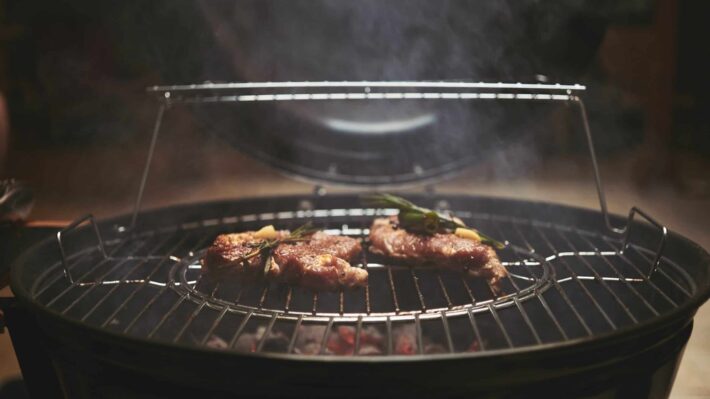
A reverse flow smoker will provide you with a more constant cooking temperature and eliminate the need to turn the meat if you’re new to smoking food or need a more consistent smoker who doesn’t require much supervision.
Because the temperature is continuous across the cooking chamber, one can smoke other food without rotating it to avoid hotspots.
Suppose you’re a more experienced smoker, though. In that case, you might like the exploitable hot spots and the offset smoker’s cleaner burn for smoking food at varying temperatures in one smoker.